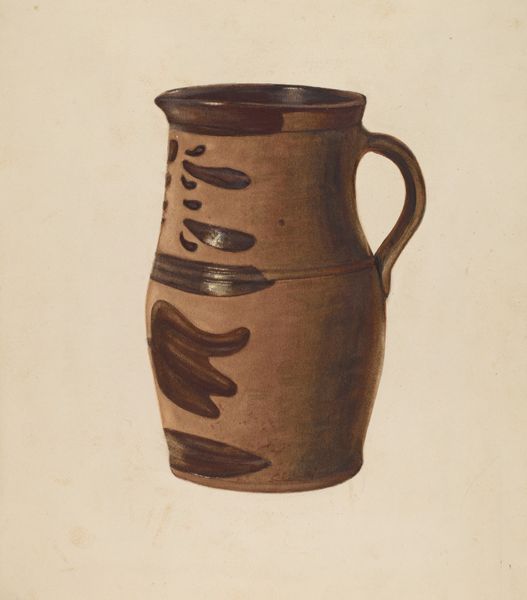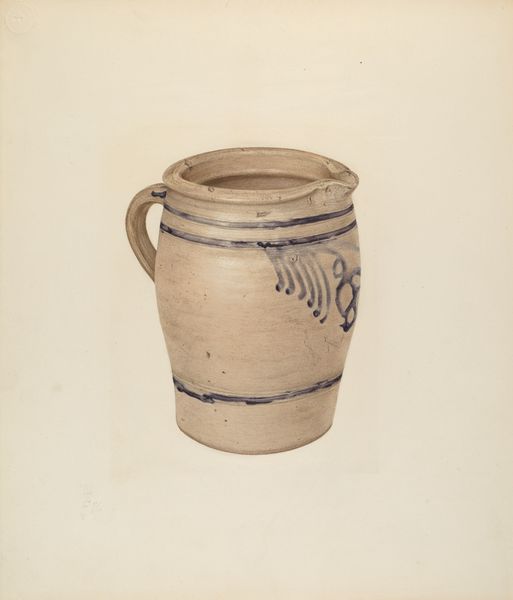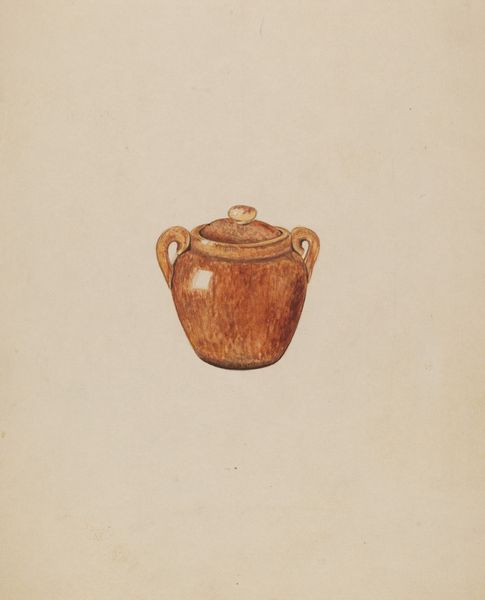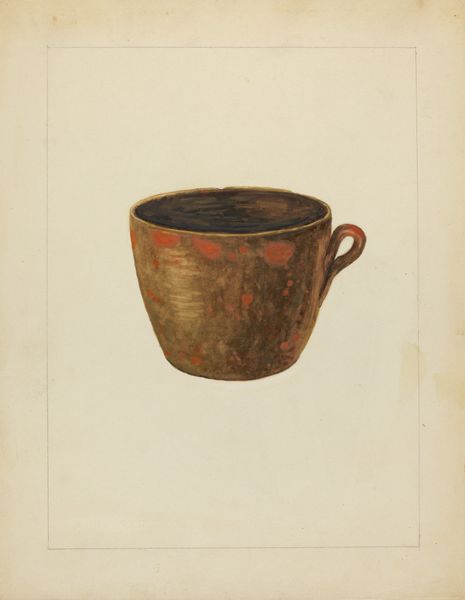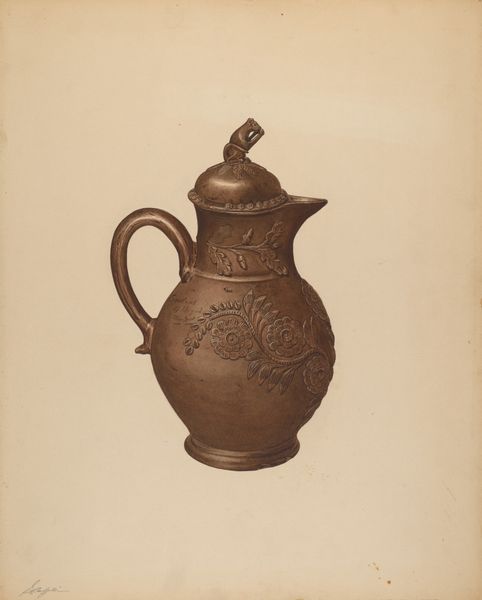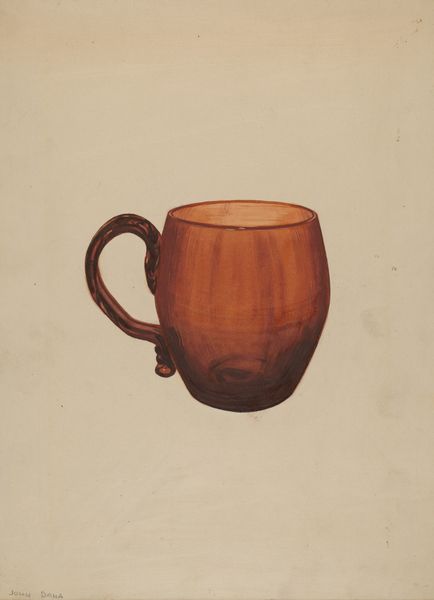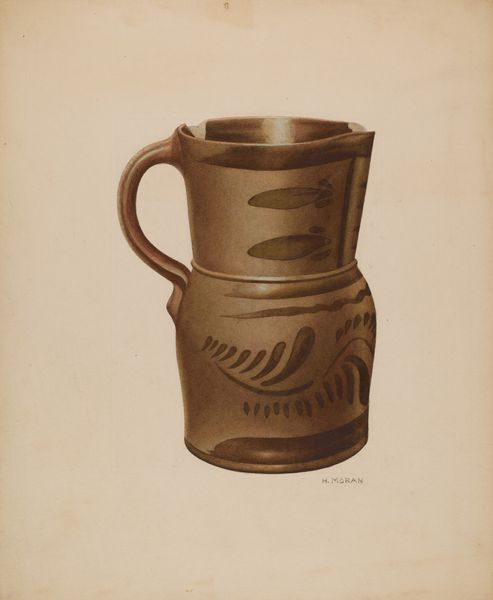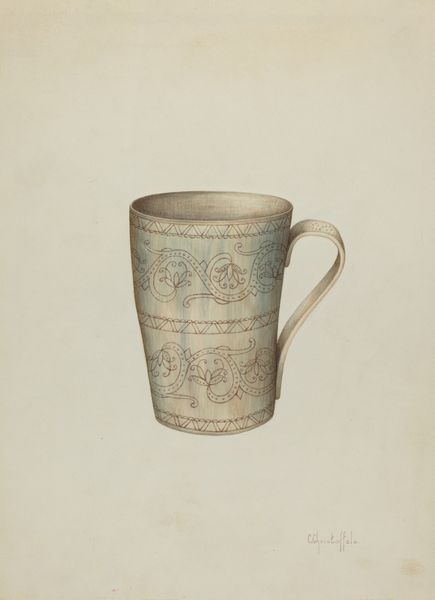
drawing, watercolor
#
drawing
#
watercolor
#
watercolour illustration
#
modernism
#
realism
Dimensions: overall: 35 x 27.9 cm (13 3/4 x 11 in.) Original IAD Object: 4" High 3 1/2" Dia
Copyright: National Gallery of Art: CC0 1.0
Editor: This watercolor drawing by William Schmidt, aptly titled "Small Pitcher," was created sometime between 1935 and 1942. What strikes me most is its...ordinariness, I suppose. How does something so functional and everyday become art? Curator: Exactly! It asks us to consider what we value. Why elevate this particular pitcher above others? It wasn't likely high-end porcelain. Consider the time period: mid-century, Depression-era America. This pitcher likely speaks to resourcefulness, utility, and the beauty found in the handmade object. Notice the medium itself—watercolor on paper. Editor: I do, yes. Curator: Watercolor, relatively inexpensive and accessible, democratizes the art-making process. And the subject matter... think of the labor involved in producing a utilitarian object like this—the potter, the kiln. Schmidt isn't just painting a pitcher; he's highlighting a whole network of production. Do you see the implications of that in our contemporary society? Editor: So, he is depicting a humble object in a way that gives the means of making value to labor instead of high art. I am realizing that I am starting to wonder who owned this pitcher and if it was special to that family? Curator: Precisely. Think about mass production versus handcrafted goods. This image makes us think about the source and conditions of what we consume. Editor: So much to consider when simply looking at a small pitcher. Curator: Indeed. And, in that consideration, we elevate not just the object, but the often-invisible processes of labor and materiality that brought it into being. Now I have a whole new respect for where utilitarian tools like pitchers come from and their production methods.
Comments
No comments
Be the first to comment and join the conversation on the ultimate creative platform.

